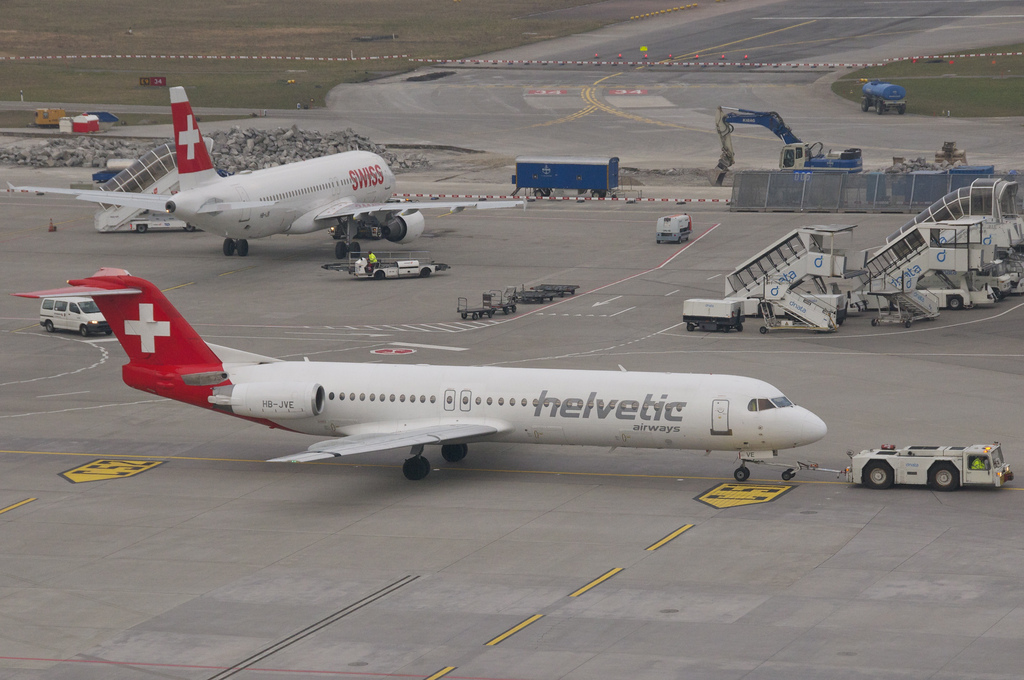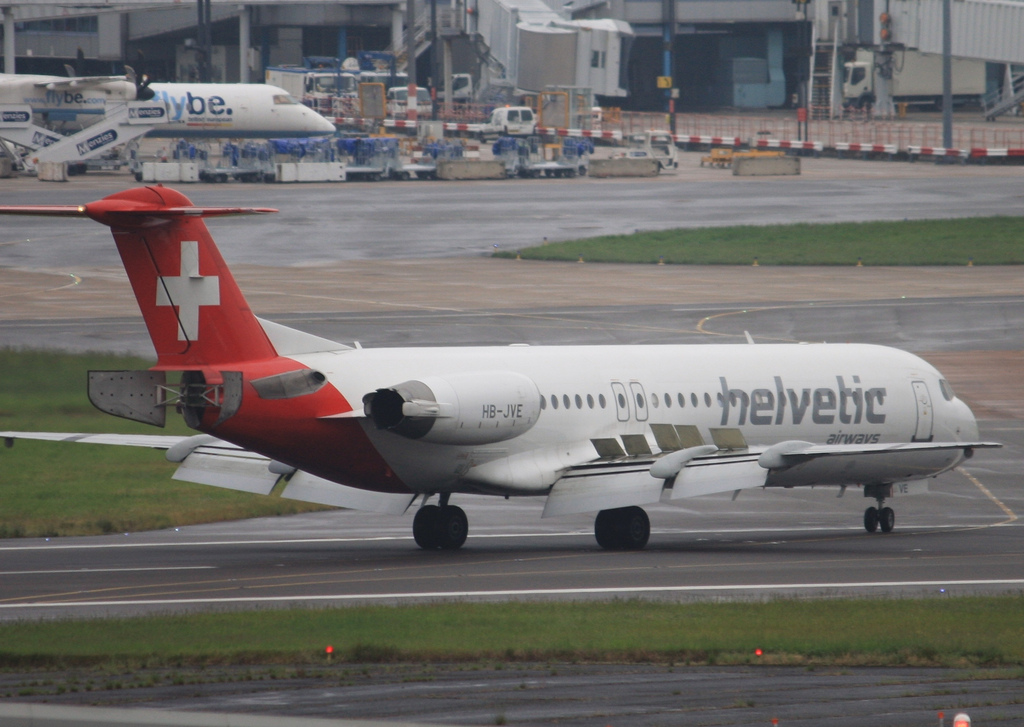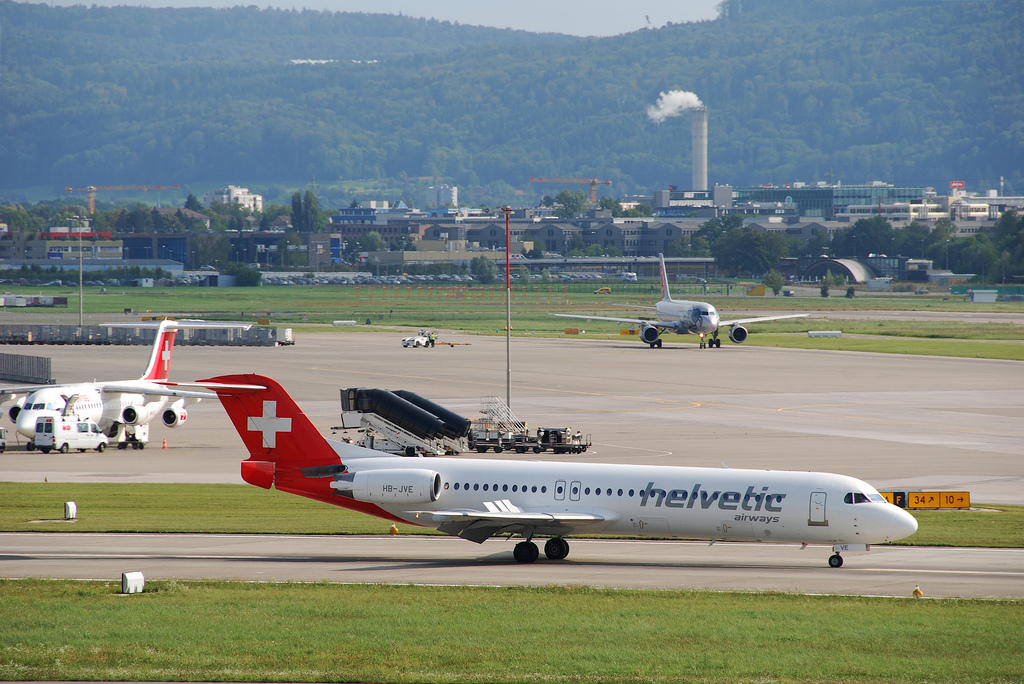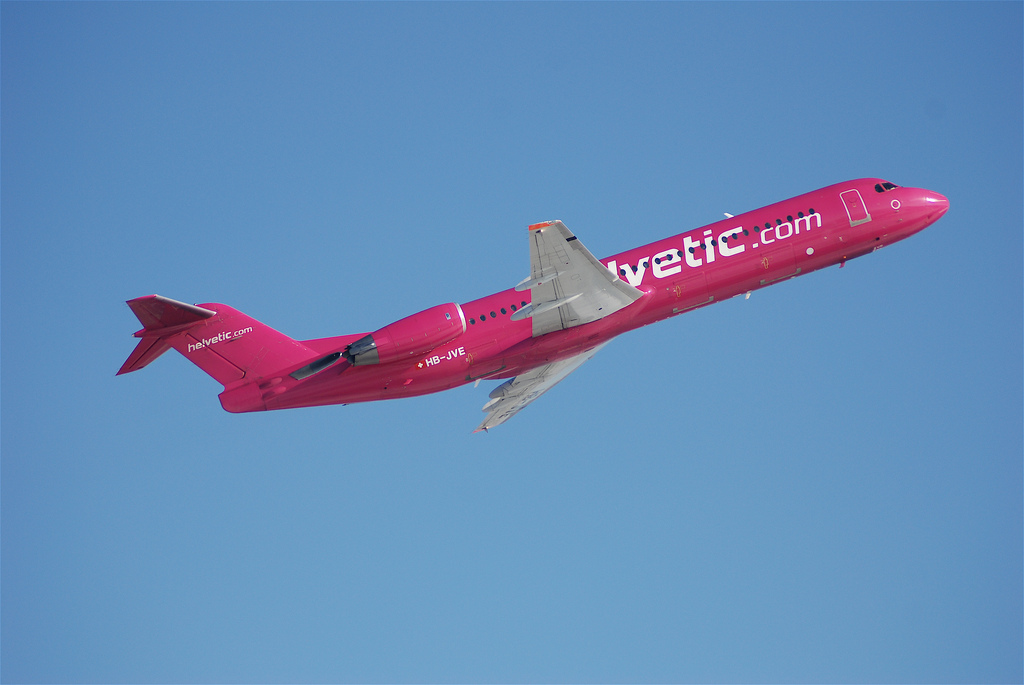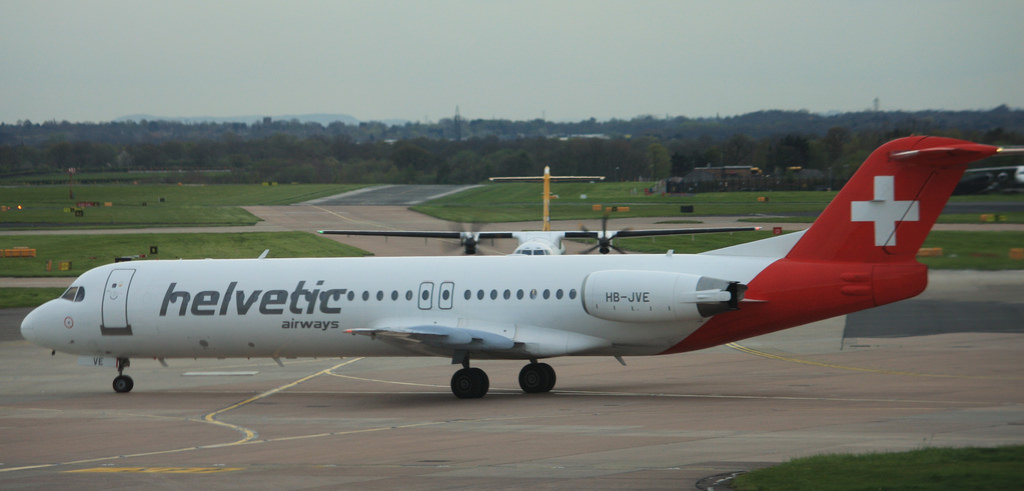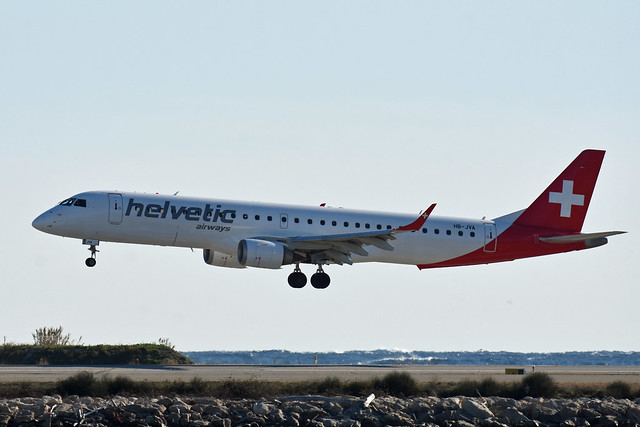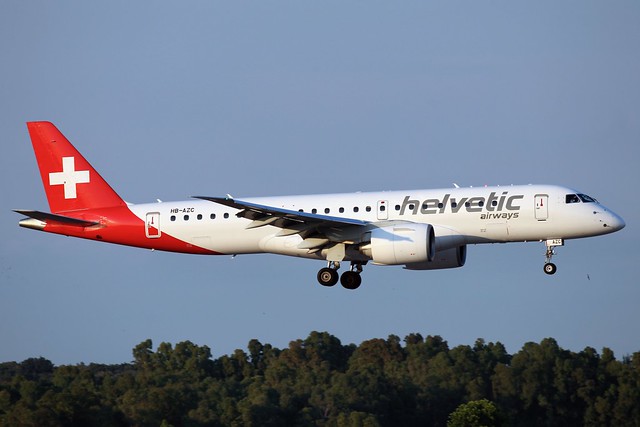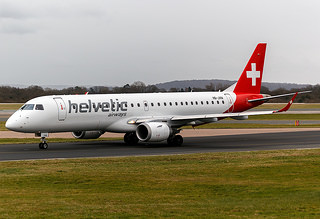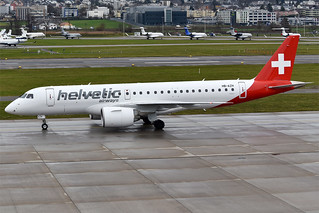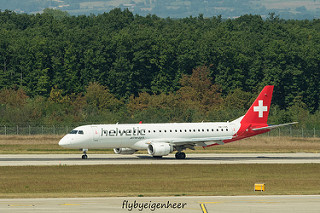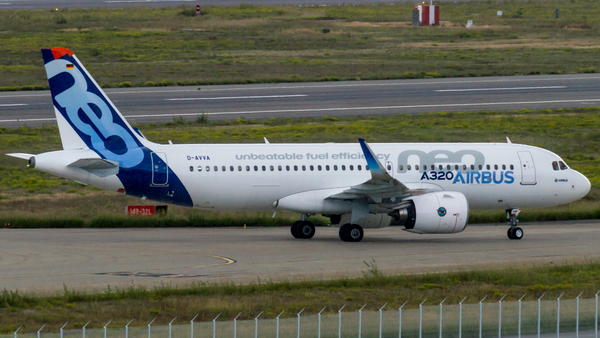Helvetic F100 at Nuremberg on Jan 20th 2015, uncontained APU failure
Last Update: February 12, 2018 / 16:36:23 GMT/Zulu time
Incident Facts
Date of incident
Jan 20, 2015
Classification
Accident
Airline
Helvetic
Flight number
LX-1189
Departure
Nuremberg, Germany
Destination
Zurich, Switzerland
Aircraft Registration
HB-JVE
Aircraft Type
Fokker 100
ICAO Type Designator
F100
The BFU reported in their monthly January bulletin released on Jun 15th 2015, that the aircraft received substantial damage including damage to the pressure vessel of the aircraft. There were no injuries. The occurrence was rated an accident and is being investigated.
The BFU reported that a post occurrence examination showed the APU cover had been ripped wide open and opened direct view to the APU core. The compressor disk had fractured, the turbine disk was seriously damaged. Pieces of the APU had penetrated the pressure vessel and the aft cabin also hitting and penetrating a flight attendant's seat coming to a stop in the container for the flight attendant's oxygen mask, where the debris melted into.
The occurrence aircraft returned to service on March 7th 2015.
On Feb 12th 2018 the BFU released their final report concluding the probable cause of the accident was:
The rupture of the APU and the resulting damage was caused by the ingestion and subsequent ignition of de-icing fluid. Additional factors were the limited field of vision and the insufficient marking.
The BFU stated following "Factual information":
The Auxiliary Power Unit (APU) ingested de-icing fluid during the de-icing procedure on the apron. Subsequently turbine speed increased strongly and the APU ruptured. As a result the aft pressure bulkhead of the airplane was punctured by debris.
The BFU reported the de-icer was just applying de-icing fluid type I to the leading edge of the right hand side of the vertical stabilizer, when the rotor speed (rpms) of the APU increased strongly and suddenly, the noise from the APU getting louder and the frequency increasing, the exhaust fumes increased strongly. The de-icer immediately aborted the de-icing and closed the jet tube. A loud bang occurred, the de-icer sought cover within his de-icing basket. More intense bangs occurred and the APU was shut off. During these events the maintenance door in the fuselage bottom sprung open and released a about 2m long flame. Blast waves of two bangs were so violent that the whole de-icing truck rocked.
The crew heard both bangs, too, and felt the aircraft was rocking. An APU error message illuminated, they shut the APU down.
A piece of the fractured APU penetrated the aft pressure bulkhead, smoke was emitted for a short time.
The BFU analysed:
Because de-icing fluid was ingested through the APU air intake, the rotational speed of the turbine began to increase. Once the threshold value was reached, the APU shut down automatically, and the fuel supply was cut off. Since the de-icing fluid had ignited and caused the increase of rotational speed, the shut-off fuel supply had no effect. The rotational speed increased further until the APU ruptured.
Subsequently, parts of the compressor wheel penetrated the aft pressure bulkhead in the area beneath the flight attendants' seats. The hot fracture piece was found embedded in the container for the smoke hoods. Smoke in the aft part of the cabin was the result. Passengers and cabin crew were prompted to move to the front part of the airplane. During a similar occurrence in the past almost the same area of the pressure bulkhead was penetrated. The BFU is of the opinion that in case the APU ruptures for other reasons it cannot be ruled out that the same area of the pressure bulkhead would be penetrated again.
The location of the APU air intake, on the right-hand side next to the fuselage and vertical tail fairing, poses the risk of de-icing fluid entering the open APU air intake during operation. The work of the de-icing personnel is made more difficult by the fact that due to the differences in temperatures fog develops which restricts the field of vision of the de-icing personnel. The APU air intake is not marked as other areas are, such as static ports. Europe has not implemented the safety recommendation the NTSB had issued due to a similar case requiring shutting down the APU during deicing.
The manufacturer had described the disadvantages extensively and these were the reasons why the safety recommendation was not implemented. This case shows, however, that the area of the air intake should be clearly marked to remind the de-icing personnel of the hazards. Other manufacturers, where the APU air intake location is comparable to the ones described here, set an example.
Aircraft Registration Data
Incident Facts
Date of incident
Jan 20, 2015
Classification
Accident
Airline
Helvetic
Flight number
LX-1189
Departure
Nuremberg, Germany
Destination
Zurich, Switzerland
Aircraft Registration
HB-JVE
Aircraft Type
Fokker 100
ICAO Type Designator
F100
This article is published under license from Avherald.com. © of text by Avherald.com.
Article source
You can read 2 more free articles without a subscription.
Subscribe now and continue reading without any limits!
Read unlimited articles and receive our daily update briefing. Gain better insights into what is happening in commercial aviation safety.
Send tip
Support AeroInside by sending a small tip amount.
Related articles
Helvetic E195 at Zurich on May 22nd 2025, flaps problem
A Helvetic Airways Embraer ERJ-195 on behalf of Swiss, registration HB-JVA performing flight LX-1019 from Dusseldorf (Germany) to Zurich…
Helvetic E290 at Zurich on Jan 28th 2024, hydraulic problems
A Helvetic Embraer ERJ-190-E2 on behalf of Swiss International Airlines, registration HB-AZC performing flight LX-1664 from Zurich (Switzerland) to…
Helvetic E190 at Luxembourg on Nov 16th 2023, gear problem
A Helvetic Embraer ERJ-190 on behalf of Swiss, registration HB-JVM performing flight LX-754 from Zurich (Switzerland) to Luxembourg (Luxembourg), was…
Helvetic E290 near Zurich on Apr 14th 2023, hydraulic problem
A Helvetic Airlines Embraer ERJ-190-E2 on behalf of Swiss, registration HB-AZH performing flight LX-1418 from Zurich (Switzerland) to Belgrade…
Helvetic E190 near Zurich on Dec 12th 2022, loss of cabin pressure
A Helvetic Embraer ERJ-190 on behalf of Swiss International Airlines, registration HB-JVN performing flight LX-1487 from Prague (Czech Republic) to…
Newest articles
ASL UK AT72 at East Midlands on Nov 14th 2025, tyre and runway damage on landing
An ASL Airlines UK Avions de Transport Regional ATR-72-212A freighter, registration G-OASB performing flight ABV-108 from Guernsey,CI to East…
TAP A20N at Lisbon on Nov 14th 2025, lightning strike
A TAP Air Portugal Airbus A320-200N, registration CS-TVP performing flight TP-862 from Lisbon (Portugal) to Venice (Italy), was climbing out of…
Subscribe today
Are you researching aviation incidents? Get access to AeroInside Insights, unlimited read access and receive the daily newsletter.
Pick your plan and subscribePartner

ELITE Simulation Solutions is a leading global provider of Flight Simulation Training Devices, IFR training software as well as flight controls and related services. Find out more.
SafetyScan Pro provides streamlined access to thousands of aviation accident reports. Tailored for your safety management efforts. Book your demo today
AeroInside Blog
Popular aircraft
Airbus A320Boeing 737-800
Boeing 737-800 MAX
Popular airlines
American AirlinesUnited
Delta
Air Canada
Lufthansa
British Airways


